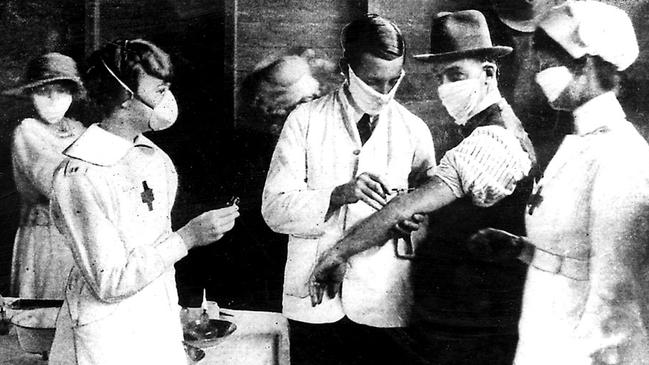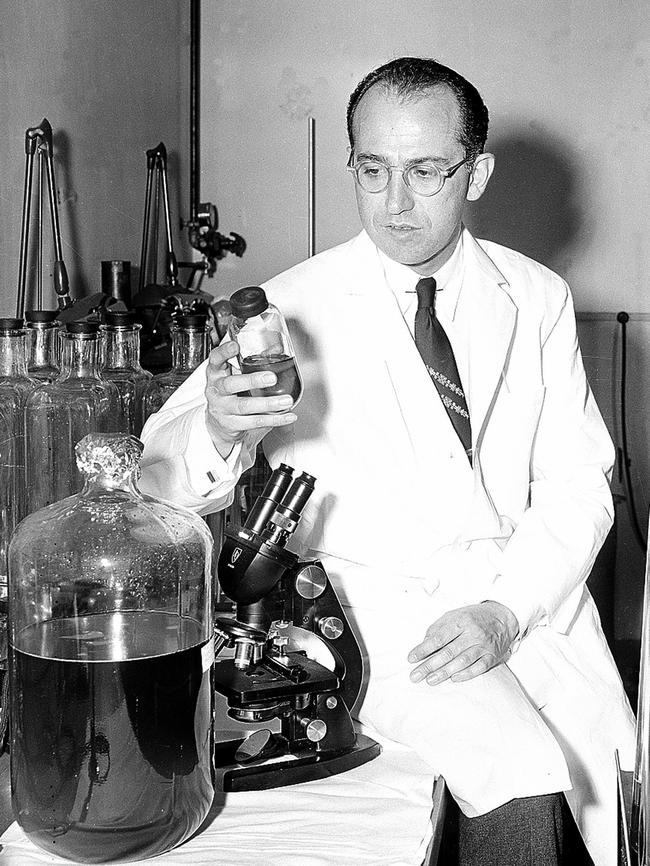Podcasts: Plagues and polio
Get inspired, stay informed, gain insight and grow, or simply escape. Listen and learn for your life.

Get inspired, stay informed, gain insight and grow, or simply escape. Listen and learn for your life.
Laura Spinney, Pale Rider: The Spanish Flu of 1918 and How It Changed the World (New Books Network, May 9, 2018)
As World War I entered its final year, a far more lethal threat began to spread across the globe. Lasting until December 1920, the Spanish flu infected about a quarter of the world’s population, 500 million people. The estimated death toll, between 50 million and 100 million, was roughly the total number of deaths from both world wars. Guiding you through one of the darkest moments in modern history is Laura Spinney, author of Pale Rider: The Spanish Flu of 1918 and How It Changed the World. Although it first aired in 2018, the podcast provides fascinating listening during the present health crisis.
One interesting insight is the tendency for people to demonstrate their best traits during a crisis but also their worst. While some communities beset by Spanish flu banded together, profiteering was rampant as the price of medical equipment and basic supplies skyrocketed — eerily similar to the soaring prices of toilet paper and hand sanitiser today. Another insight is the mystery of the pandemic’s origin. The Spanish flu did not begin in Spain. Spinney discusses the role the media played in the misnomer, and the theories about where the pandemic originated, including Kansas, British army camps in France and China. While the interview tends to be quite dry, Spinney’s expertise and charisma shines through, leaving you enlightened and thankful for modern healthcare systems. Worth a listen.
This Podcast Will Kill You? Episode 7 Hit Me With Your Best (Polio) Shot (Exactly Right network)

The advance of medical science and sanitation infrastructure in the 20th century mitigated the risk of unhygienic diseases such as the plague. However, improvements in sanitation had an unintended side effect, as children’s immune systems were weakened. The story of polio is absorbing: the infection and paralysis of the 32nd president of the US, Franklin D. Roosevelt, the use of iron lungs, swimming pools closed and one of the greatest quotes in scientific history.
Guiding you through the background of the disease are ecologists and epidemiologists Erin Walsh and Erin Allmann Updyke. Poliomyelitis became a health crisis at the same time as the Spanish flu. In 1916, the disease killed 27,000 people in the US. By 1952, the development of the iron lung saved many but 21,000 people were paralysed.
Disease is often called the “great leveller”, afflicting humans regardless of their wealth, race or sex. But Roosevelt’s affliction with polio in 1921, did not hold him back. Struck down the year after campaigning for vice-president, he became president in 1933 despite being paralysed and unable to walk unaided.
The polio story is inspiring . When Jonas Salk, who first developed the vaccine, was asked about the ownership of the patent, he said: “The people, I would say. There is no patent. Could you patent the sun?” A triumph of medical progress and human altruism.
In Our Time: The Black Death (BBC 4, May 22, 2008)
While the Spanish flu infected a quarter of the world’s population, its impact pales in comparison to the Black Death. Arriving in Sicily’s Port of Messina in 1347, the epidemic devastated Europe, killing almost one-third of the continent’s population by 1350.
Its devastating spread ended after officials in the Venetian-controlled port city of Ragusa implemented the world’s first social distancing measures. Sailors were held on their ships for 40 days until it became clear they weren’t ill, a process also known as a quarantine.
The Black Death would change European society profoundly, and in just 42 minutes, the podcast races through the sociological, theological and artistic implications.
This includes the heroism of Pope Clement VI, who defied popular opinion and urged his clergy to defend the Jewish population from persecution after they had been blamed for the outbreak of the plague.
By the end of the epidemic, a huge migration of people left the countryside empty, as people rushed to cities in search of better pay. The post-plague migration resulted in the foundation of many institutions we still use today, such as hospitals, chancelleries and universities.
Despite the whirlwind nature of the podcast, the host Melvyn Bragg and his three guests — all esteemed professors of medieval history — provide the right amount of detail.


